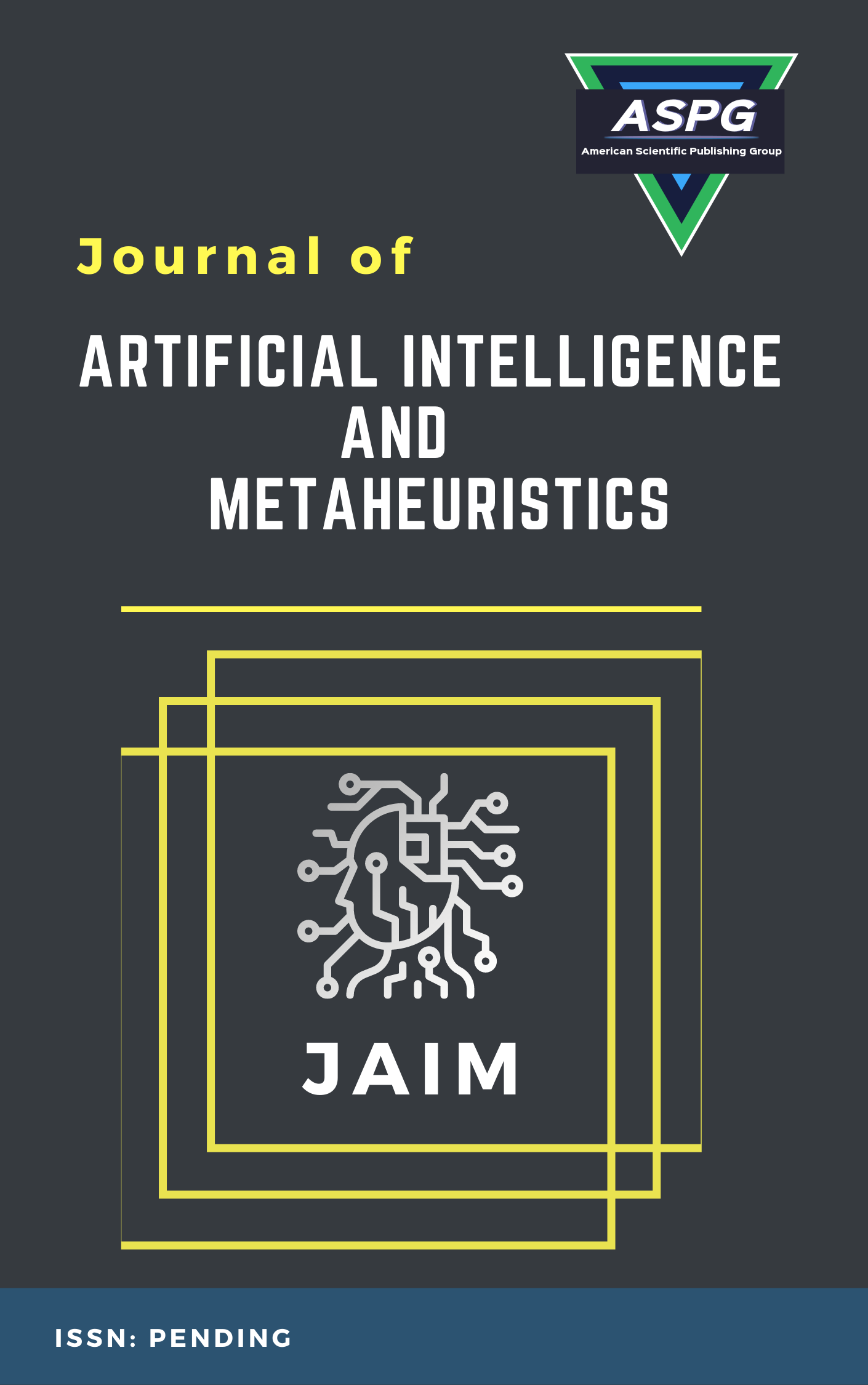

Volume 7 , Issue 2 , PP: 39-50, 2024 | Cite this article as | XML | Html | PDF | Full Length Article
Sekar Kidambi Raju 1 , Marwa M. Eid 2 *
Doi: https://doi.org/10.54216/JAIM.070204
This paper focuses on Exploratory Data Analysis of the data from the “International Student Demographics,”which is available on Kaggle and comprises data collected through the academic years, as well as total students, U. S students, undergraduate, graduate, non-degree students, and OPT columns. In the given work, the author intends to provide a chronological overview of the demographic data of international students. Operations like handling missing values and outliers were done to prepare the data for a more elaborate analysis. All descriptive analyses during the study included time series plots and bar charts where time series was used to evidence key trends and distributions. The analyses of the research questions indicate that there has been growth in international student enrollment over the decades, particularly in undergraduate and OPT student categories, with influences from world events such as COVID-19 and the alteration of immigration policies. Country-wise contribution reveals that the maximum number of articles originated from East Asia and South and Central Asia, with a special focus on engineering, social sciences, and humanities. Solutions: The paper articulates the finality of trends affecting educational institutions and policymakers by focusing on the implications of international students’ demographics. Based on the findings above, future research directions are proposed to improve the findings and support evidence-based practice relating to international education.
International Students, Demographic Trends, Exploratory Data Analysis, OPT Programs, Higher Education Policy
[1] Y. H. Al-Mamary and M. Alshallaqi. Impact of autonomy, innovativeness, risk-taking, proactiveness, and competitive aggressiveness on students’ intention to start a new venture. Journal of Innovation & Knowledge, 7(4):100239, 2022.
[2] C. Cao, C. Zhu, and Q. Meng. Chinese international students’ coping strategies, social support resources in response to academic stressors: Does heritage culture or host context matter? Current Psychology, 40(1):242–252, 2021.
[3] Dr. K. Cheung, Dr. K. Y. Tam, Ms. H. Tsang, Dr. L.W. Zhang, and Dr. S.W. Lit. Depression, anxiety and stress in different subgroups of first-year university students from 4-year cohort data. Journal of Affective Disorders, 274:305–314, 2020.
[4] A. S. Elemo, A. H. Ahmed, E. Kara, and M. K. Zerkeshi. The fear of covid-19 and flourishing: Assessing the mediating role of sense of control in international students. International Journal of Mental Health and Addiction, 20(4):2408–2418, 2022.
[5] Q. Jiang, M. Yuen, and H. Horta. Factors influencing life satisfaction of international students in mainland china. International Journal for the Advancement of Counselling, 42(4):393–413, 2020.
[6] R. Khan, T. Apramian, J. H. Kang, J. Gustafson, and S. Sibbald. Demographic and socioeconomic characteristics of canadian medical students: A cross-sectional study. BMC Medical Education, 20(1):151, 2020.
[7] C. S. T. King and K. S. Bailey. Intercultural communication and us higher education: How us students and faculty can improve: International students’ classroom experiences. International Journal of InterculturalRelations, 82:278–287, 2021.
[8] S. Lomer and J. Mittelmeier. Mapping the research on pedagogies with international students in the uk: A systematic literature review. Teaching in Higher Education, 28(6):1243–1263, 2023.
[9] Y. P. V. Mbous, R. Mohamed, and T. M. Rudisill. International students challenges during the covid-19 pandemic in a university in the united states: A focus group study. Current Psychology, 43(9):8325–8337, 2024.
[10] R. Miles, L. Rabin, A. Krishnan, E. Grandoit, and K. Kloskowski. Mental health literacy in a diverse sample of undergraduate students: Demographic, psychological, and academic correlates. BMC Public Health, 20(1):1699, 2020.
[11] K. H. Mok,W. Xiong, G. Ke, and J. O.W. Cheung. Impact of covid-19 pandemic on international higher education and student mobility: Student perspectives from mainland china and hong kong. International Journal of Educational Research, 105:101718, 2021.
[12] C. Reid, J. Beckstead, and A. Salinas-Miranda. Covid-19 stress, social support, and coping in international students during the covid-19 pandemic: A moderated analysis on anxiety and depression. Journal of American College Health, 72(5):1617–1623, 2024.
[13] A. Rezai, E. Namaziandost, M. Miri, and T. Kumar. Demographic biases and assessment fairness in the classroom: Insights from iranian university teachers. Language Testing in Asia, 12(1):8, 2022.
[14] I. Ruthotto, Q. Kreth, J. Stevens, C. Trively, and J. Melkers. Lurking and participation in the virtual classroom: The effects of gender, race, and age among graduate students in computer science. Computers & Education, 151:103854, 2020.
[15] F. Shu, S. F. Ahmed, M. L. Pickett, R. Ayman, and S. T. McAbee. Social support perceptions, network characteristics, and international student adjustment. International Journal of Intercultural Relations, 74:136–148, 2020.
[16] C. Sin, D. Antonowicz, and J. Wiers-Jenssen. Attracting international students to semi-peripheral countries: A comparative study of norway, poland and portugal. Higher Education Policy, 34(1):297–320,2021.
[17] B. Song, Y. Zhao, and J. Zhu. Covid-19-related traumatic effects and psychological reactions among international students. Journal of Epidemiology and Global Health, 11(1):117–123, 2021.
[18] K. Tilley, V. Ayvazyan, L. Martinez, N. Nanda, E. S. Kawaguchi, M. O’Gorman, D. Conti, W. J. Gauderman, and S. Van Orman. A cross-sectional study examining the seroprevalence of severe acute respiratory syndrome coronavirus 2 antibodies in a university student population. Journal of Adolescent Health, 67(6):763–768, 2020.
[19] C. Van Mol, K. Caarls, and M. Souto-Otero. International student mobility and labour market outcomes: An investigation of the role of level of study, type of mobility, and international prestige hierarchies. Higher Education, 82(6):1145–1171, 2021.
[20] M. Wilczewski and I. Alon. Language and communication in international students’ adaptation: A bibliometric and content analysis review. Higher Education, 85(6):1235–1256, 2023.
[21] W. H.Wong and E. Chapman. Student satisfaction and interaction in higher education. Higher Education, 85(5):957–978, 2023.
[22] J. Zimmermann, H. Greischel, and K. Jonkmann. The development of multicultural effectiveness in international student mobility. Higher Education, 82(6):1071–1092, 2021.